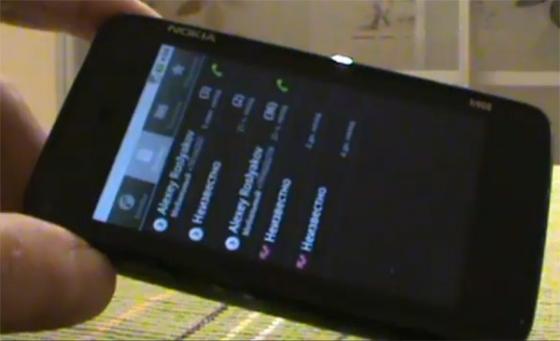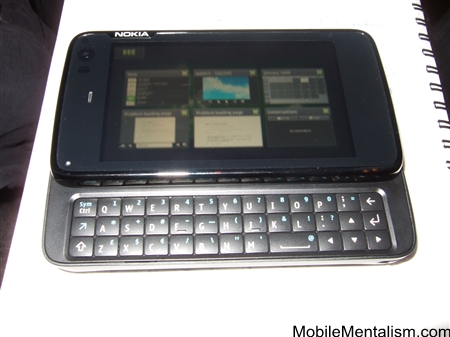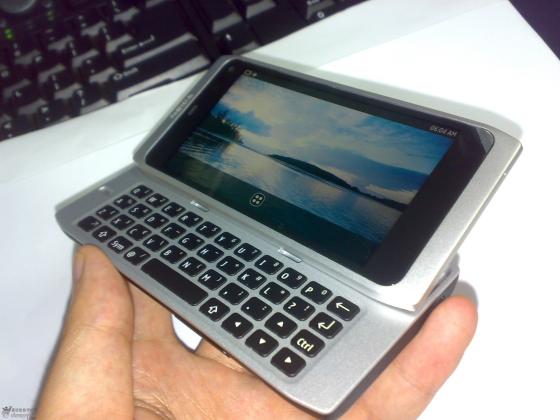NITDroid: Nokia’s worst nightmare suddenly becomes real
I love the fact that modern smartphones can be moulded to the whim of the customer, no matter what the manufacturer’s original intentions. Take, for example, the HTC HD2, which was originally released with Windows Mobile 6.5.
It didn’t take long for the Android modding community to mould the fine hardware of the HD2 to their own preferences, and install a much better mobile OS onto it: Android (which some people have argued it should have had right from the very beginning).
But the Android fun hasn’t stopped with the HD2: what you see in these pics is the Nokia N900 running Android. It’s Nokia’s worst nightmare, as the most common question thrown at the Finnish company is why they don’t give up on Symbian and Maemo and MeeGo and just use Android instead.
But with the Android modding community, it was almost an inevitability that the powerful hardware underlying the N900 would soon find itself powering an Android OS of some form or other.
And now it has. So how scared should Nokia be of its nightmare come to life?

NITDroid overview
The N900 was always a very capable device. As far as hardware was concerned, it was easily able to take on the very best of its smartphone competitors.
Its only problem was that it used the Maemo 5 mobile OS, which isn’t that well known (at least not compared with the likes of Android, the iPhone, and even Nokoia’s own Symbian), and so suffers somewhat from a lack of developer support.

But the great thing about Maemo is that it’s based on Linux – as is Android! So it didn’t take long before a few developers looked at it and thought “how difficult can it be to port Linux over to it?”
Which is exactly what they did!
Enter NITDroid, the new Frankenstein’s monster that is part-Nokia, part-Google, and all nightmare!
Why is NITDroid such a problem for Nokia?
Although NITDroid isn’t complete yet, it’s only a matter of time before it is. You can see its progress in the video below, which clearly shows a near-complete version of Andriod running on the N900.
The problem for Nokia is that when NITDroid is complete, it will be a complete Android OS running on its flagship smartphone, which will enable people to make a direct comparison between Android and Maemo. And if Maemo ends up second best, this will only stir analysts even more who are already pushing Nokia to give up on Maemo/MeeGo and join the Android bandwagon, like Sony Ericsson and Motorola before them.
MeeGo to the rescue?
Fortunately for Nokia, they’ve moved on from Maemo, merging it with Intel’s Moblin OS to form MeeGo, which will feature on the new Nokia N9. However, it’s only a matter of time before the seemingly ubiquitous Android is ported to the N9 as well, giving Nokia the same problem as NITDroid presents.

Worse, Google are due to release Android v3.0 very soon. Codenamed Gingerbread, its expected to be a giant improvement over Android 2.2, which itself is an extremely competent mobile OS. Android 3 on a new Nokia N9 could ask all sorts of questions of Nokia’s relentless strategy of developing everything itself, from hardware, to mobile OS, to apps, even to its maps.
The answer, clearly, is to make MeeGo so damn good that it blasts Android out of the water. Indeed, this is Nokia’s only choice. At least when the modders gave the HTC HD2 a brand new Android make over, which looked much better than the original, HTC were able to rightfully say “we only developed the hardware, not the OS”, and then promptly developed the HTC EVO, which is basically an HD2 with Android (and a few extra bells and whistles).
With Nokia, they have no such luxury – MeeGo is to be their flagship smartphone OS. If Android proves to be better than it on the same Nokia hardware, then MeeGo’s in real trouble.
This in turn, means Nokia could be in trouble, or at least it’s current strategy. Nokia have an overriding obsession with developing everything themselves. Where other mobile phone manufacturers are happy to embrace third party mobile OSes, Nokia resolutely refuses to.
The threat to Nokia’s strategy
Sony Ericsson, Motorola, LG and HTC, for example, have all adopted Androida and Windows Mobile, while Samsung and Sony Ericsson have adopted Symbian as well, and Samsung and LG have adopted Windows Phone 7.
In short, these manufacturers have effectively spread the risk, choosing a variety of different mobile OSes so that if one falls out favour, they still have other OSes to fall back on.
Nokia, however, only ever uses Nokia technology. Consequently a Nokia phone will only use a version of Symbian, Maemo or MeeGo – all Nokia OSes. The danger with this strategy is that if these OSes start to be perceived as poor, then the whole Nokia brand will also be seen in the same light.
Nokia’s go it alone strategy in other words, will only work so long as its technology is better than the competition’s.
The pressure is on MeeGo
All of which means MeeGo has to excel. I hope it does, and I think it can. If Microsoft can completely redesign Windows Mobile from the ground up, then Nokia must surely be capable of doing the same, with Maemo morphing into MeeGo.
We shouldn’t have too long to find out. The Nokia N9 is rumoured to be launched at Nokia World on September 14. We’ll be there to see exactly what the future holds for our favourite European mobile phone manufacturer.
If the Nokia N9 and MeeGo fail, then Nokia will have no choice but to expand its vision and embrace other mobile OSes, in particular Android.
Whatever happens, this year’s Nokia World is going to be a truly fascinating event!
[Source: Engadget]







